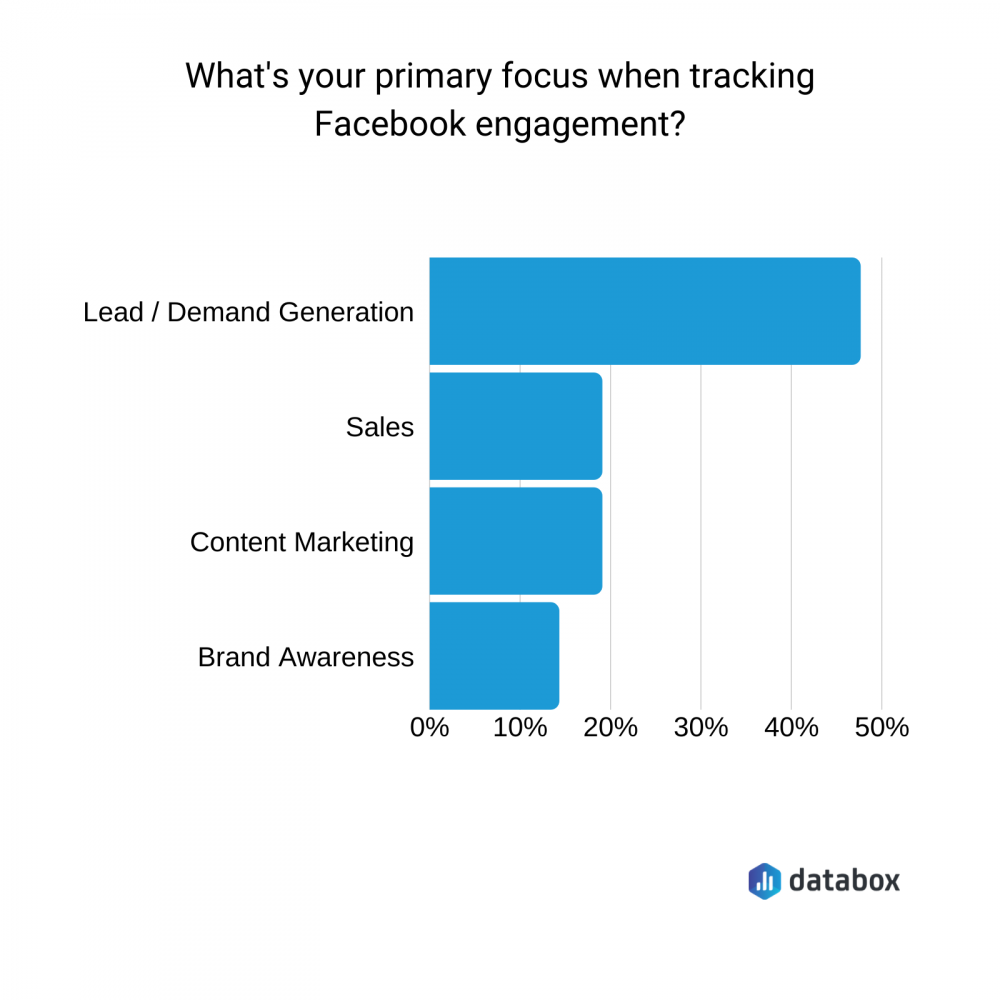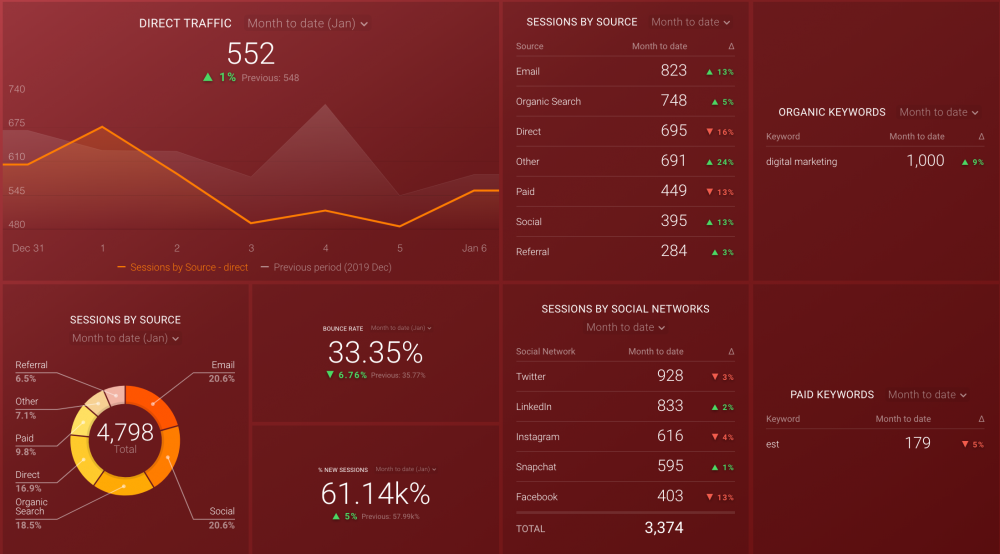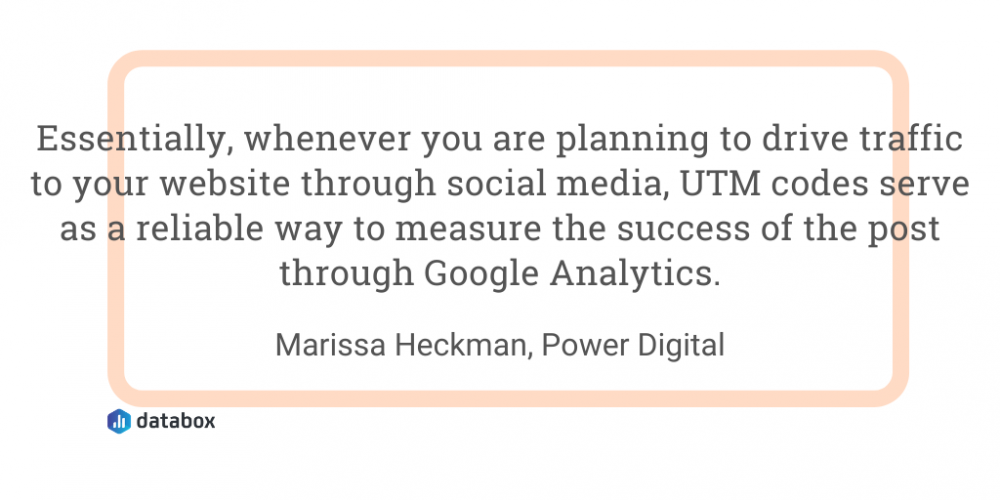Table of contents
How much traffic did you get from your latest Facebook page post?
What percentage of people in my public Facebook group has subscribed to my newsletter and also bought at least one product?
What’s the return on ad spend (ROAS) from my newest Facebook ad campaign?
These are all questions you may have asked at one point in time. All of these questions – along with many more- can be answered in Google Analytics.
In this post, we asked 17 marketers to share their tips for how they measure Facebook engagement on Google Analytics.
Why is it important to track Facebook engagement?
Many marketers are quick to dismiss Facebook engagement, thinking it is just another vanity metric. Vanity metrics might look good on paper and inflate your ego, but it doesn’t have an impact on the bottom line (i.e. revenue).
This isn’t the case if you are running Facebook or Instagram ads. Keeping a close eye on how engaging your ads are can end up saving you a bunch of money.
“The engagement statistics play an important role in any Facebook optimization event,” says Chris Paterniti of Dilate Digital. “As you all may know, Facebook now has a relevance score assigned to every event – meaning that you must be placing the right targeting to an engaged audience so your ads will be cheaper.”
Paterniti adds, “Google Analytics is very powerful in the fact that it can show you a few things Facebook cannot. It also has the ability to quick and easy cross-examination between platforms. For example, I could be running a pretty identical campaign on Facebook/Pinterest ads, but in Analytics I could take my discovery more in-depth by looking at both mediums at the same time and what their bounce rate, session time, exit pages, where people get to in the funnel, etc. So analytics can help at looking at what is a better investment and WHERE to double down.”

In fact, almost 50% of the marketers we surveyed said their primary reason for measuring Facebook engagement was around lead generation.

How to measure Facebook Engagement in Google Analytics
There are several ways to track Facebook engagement in Google Analytics, and the route you go will depend on your specific goals and setup.
Filter by Source
“To track Facebook engagement in Google Analytics, I recommend sorting by source to see where visits to the site are coming from,” says Lauren Gast of Truck Driver Institute. “Once you have filtered visits from Facebook, take a look at metrics like time on page, bounce rate, and any site-specific conversions to see whether those visits are meeting your particular marketing goals.”
Avinash Chandra of BrandLoom says, “For us at BrandLoom, the most important tip which we follow on Facebook is that how many people are actually clicking on the Facebook link and landing on our website.”
“Look at the landing pages,” says Saloni Doshi of EcoEnclose. “This is a great way to see which pages people on Facebook are most interested in. Depending on your business, this can be a product or service or even blog content. From there, you can prioritize optimizing these pages on your site and even create more social posts around those topics.”
Rob Sanders of Socially Found says, “Through the Google Analytics menu under Behaviour > Site Content > All Pages, we can track the number of visits to specific pages from Facebook, as well as the time they spent on that page, allowing us to compare it to other marketing sources that may also be in place.”
Toni JV of JVT Media adds, “Look at your traffic sources and go look at the number of clicks you got from Facebook. Then analyze this data, particularly your bounce rate, pages per session, and average session duration. This can give you valuable information on if your landing page and website needs some work.
If you’re going for conversions like the 55% of advertisers polled in this Facebook ads research, be sure to track that data as well. We want to make sure that when people DO get on our website, that they’re actually converting. This way, we can keep improving our website to get the most conversions.
And if you’re doing paid advertising on Facebook (most likely) don’t forget to install your Facebook Pixel on your website, so you can re-market to those people who already showed interest by going to your website.”
Editor’s Note: This Google Analytics Acquisition Dashboard allows you to quickly see which social media channels are driving the most traffic to your website.

Track social actions
Arvind Patil of SRV Media says, “Apart from tracking primary parameters, make sure to track social actions in your social media dashboard, so you can compare likes and sends from Facebook.”
Monitor bounce rate and time on page
“Bounce rate and time on page will tell you the most of your social engagement on your site,” says Catherine Way of Prime Plus Mortgages. “If you keep your bounce rate low and your time on page high, you are creating good lead pages and content, social wants to read!”
“One tip that we always use for tracking Facebook Engagement is Bounce Rate,” says Brendan Golingan of Studio Culture. “Firstly, we have to make sure that we are looking at the Bounce Rates purely from Facebook. The data here will help show us and see how effective our landing page and content is.
If your data is showing a high bounce rate, this tells us that many of the users are not interested in the landing page, and leaving the page without interacting with the site. With this information, we would have to look at making changes and tests to the landing page to help increase user engagement and conversions.” Alternatively, you can use a social media dashboard software to measure your bounce rate.
Use UTM Codes
“Make sure you have UTM parameters set in place,” says Bri Curran of SyncShow. “Not only do they make it easier to differentiate your paid and organic efforts, but they also provide specific data about where your traffic and conversions are coming from.”
Joseph Colarusso of CORE Search Marketing agrees, “Always add UTM parameters to your URLs on Facebook so you can track visitors from Facebook to your website.”
Marissa Heckman, of Power Digital Marketing says, “I recommend using unique UTM codes when doing any traffic-driving social posts (promotional posts, blog articles, etc.). Essentially, whenever you are planning to drive traffic to your website through social media, UTM codes serve as a reliable way to measure the success of the post through Google Analytics. When creating a post optimized for post clicks, you can create a UTM code specific to that exact post by utilizing the source and campaign naming convention.
For source, put the platform you are posting on, in this case, Facebook.
For campaign name, create a unique campaign name that ties to that particular post – that way when you dive into Google Analytics, you are able to see which Facebook post drove the most traffic to your site, thus offering you invaluable learnings on how to best communicate your service to your audience.”

Khanh Tran of Villa Finder adds, “My top tip for tracking Facebook engagement: Use Google’s Campaign URL Builder.
At Villa Finder, we use Campaign URL Builder to create custom links that allow us to better track our Facebook traffic.
To give you a bit of context, Villa Finder provides holiday villas in the Asia Pacific. We often promote our Facebook posts as well as run targeted ad campaigns and track acquisitions on Google Analytics. We would like to know exactly which post/campaign brings the most traffic and requests for the villa. So on Campaign URL Builder, a link is set up as follows:
- Website URL: the page where you want customers to land
- Campaign Source: Facebook
- Campaign Medium: post or ad
- Campaign Name: name of the villa
Thanks to this, we can always tell exactly what our clients click on and what they like, create better content, and use the right format for the right objective.”
UTM tracking is even more important if you are running any Facebook or Instagram ads.
Amanda Stewart of Vineyard Bluffton adds, “If you’re tracking paid ads (Facebook or Instagram) in Google Analytics, make sure your UTM parameters are set correctly on the Facebook platform at the ad level. Keep a close eye on them when your campaigns launch.”
Anna Gorecki of Intigress says, “This gives you the opportunity to look at post-click engagement on your website via Google Analytics while knowing which Facebook ads were the original source.”
Editor’s Note: This Facebook Ads Dashboard allows you to see campaign activity, including ad engagement, clicks, and money spent.

Check last-click attribution models
“I find it super valuable to track custom dimensions for additional Facebook campaign parameters i.e., audiences in Google Analytics,” said Gabe Solberg of EasyAutoTagging. “Having said that for eCommerce, it is critical to look at Google Analytics to understand how you are driving sales on a last-click model. This is not the end-all; however, it does tell you if your daily Facebook ad spend to revenue is operating at a loss or break even.
Facebook’s attribution model differs in that it can measure people across devices over 28 days, which is valuable in understanding the impact of Facebook ads over time. However, keep in mind that Facebook Ads Manager data does not account for cross channel performance. Without Google Analytics, you become over-reliant on a single channel to deliver all results, which can be an incomplete picture (especially from day to day account management) and quickly have you operating at a loss.”
Set up Google Tag Manager
“I actually use Google Tag Manager to fire events based on pageview length and session duration,” says Blake Smith. “I can then feed this data into Facebook and Google Analytics to determine the engagement. This allows me to attribute how valuable the traffic is from Facebook for campaigns that I run. Some Facebook ad campaigns may focus on content distribution rather than leads. So to have a Facebook event feed data back into Facebook (to serve ads to users more likely to engage) and Google Analytics (to track which campaigns and pages are working the best) is really powerful.”

In conclusion, measuring Facebook engagement can provide you with many insights into how organic and paid posts and campaigns are performing. To get a deeper understanding, it is important to set up Google Tag Manager and use UTM parameters consistently across your organization.
Ready to start tracking your metrics? With our business metric tracking software, you can track all of your key business metrics from one just screen.








![How to Leverage Your Website Analytics to Acquire New Customers? [Research Findings Based on 100+ Companies]](https://cdnwebsite.databox.com/wp-content/uploads/2022/10/10044001/google-analytics-4-metrics-and-dimensions-guide-1000x563.png)

![High Shopping Cart Abandonment Rate: Causes and Potential Solutions [Insights from 65+ Experts]](https://cdnwebsite.databox.com/wp-content/uploads/2022/01/17041843/ecommerce-challenges-1000x563.jpg)



